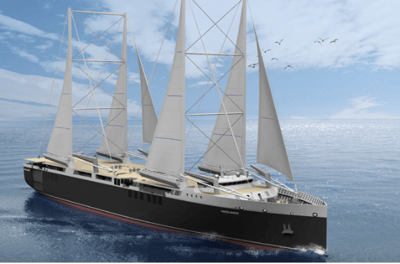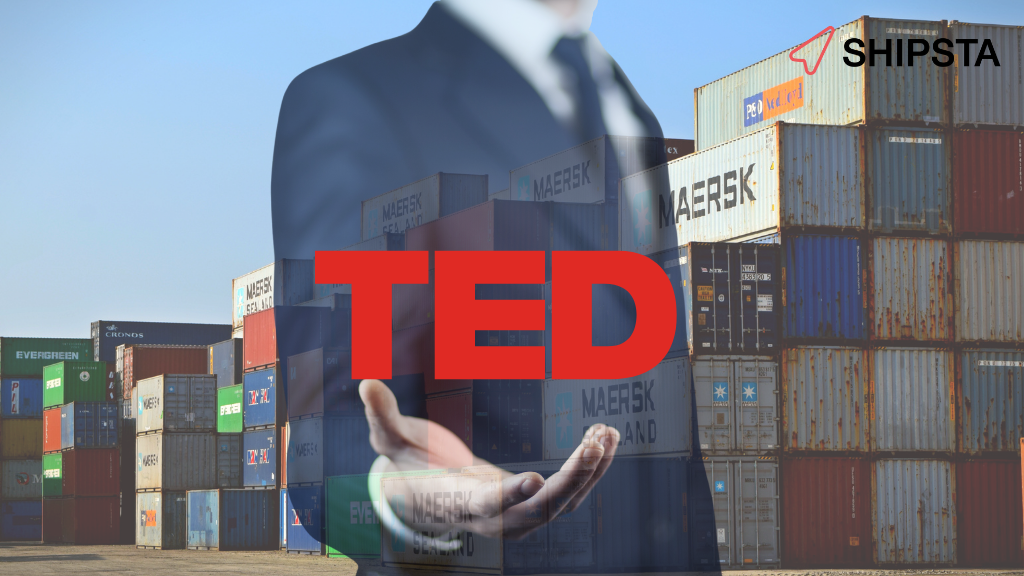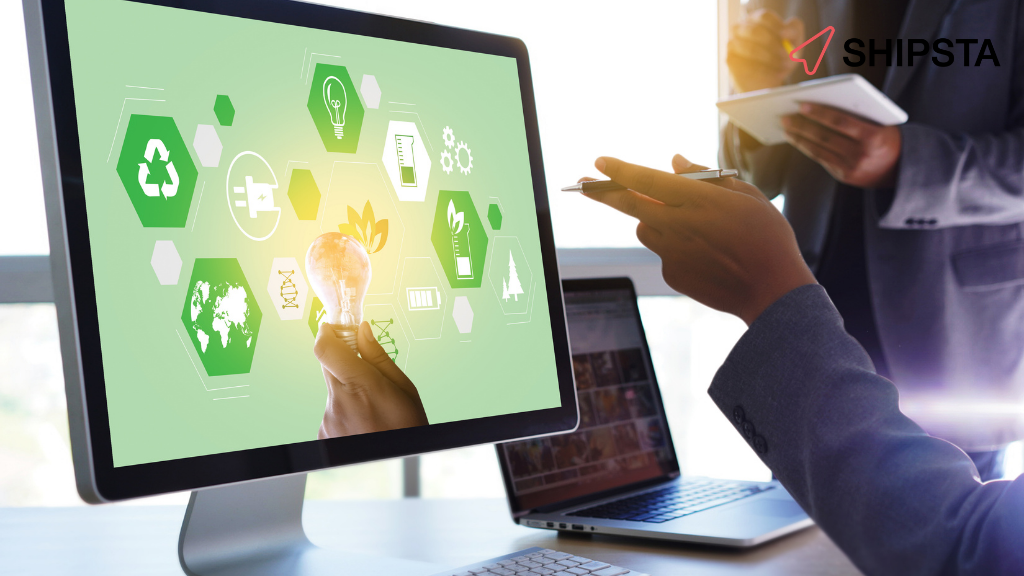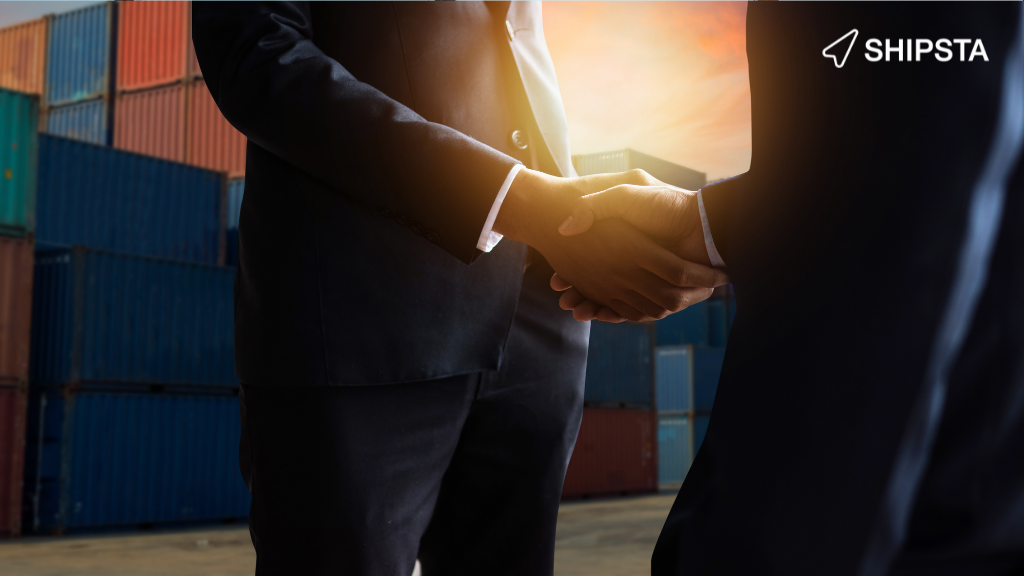In part one of our series on sustainability in freight procurement, we discussed the challenges shippers face to reduce CO2 emissions.
In part two, we looked at how you can start your journey to sustainable freight procurement and which brands are leading the way in terms of sustainable shipping.
In this last part of the series, we’re looking forward to see what the future of sustainable freight procurement will look like.
Right now, sustainable shipping technology is just in its infancy – the innovations on the horizon have the potential to clean up shipping in huge ways. So, here are the 5 tech innovations the industry is getting excited about that will make reaching CO2 neutrality achievable for every business.
1. CO2 Neutral Trucks
HGVs are one of the dirtiest forms of transport, producing the second most CO2 emissions per km after air travel. However, trucks are one of the most important modes of transport as they deliver shipments from ports to their final destination.
This reliance on fossil fuel powered trucks makes creating a CO2-neutral shipping strategy extremely difficult and leaves you relying on carbon offsetting to hit sustainability targets.
However, the future of road transport looks a lot greener! HGV manufacturers are investing massively into CO2-free truck technology. There are two types of trucks that we can expect to see hit our road en masse over the next decade.
Electric trucks
Just a few years ago, many trucking industry experts believed an electrified fleet would be impossible. They thought trucks were too large and travelled too far to rely on battery power.
However, with electric vehicle technology advancing at a rapid rate (and becoming more cost-effective) many truck manufacturers are investing in creating electric HGV fleets.
This is already moving at a rapid pace: By 2030, electric vehicles are predicted to make up 12% of the US fleet – up from less than 1% currently.
Hydrogen-powered trucks
Imagine a vehicle that produces zero harmful emissions, instead just emitting water vapour and warm air. Sounds like sci-fi, right? Well, this is how hydrogen-powered trucks work.
They are powered by an electric motor, like electric cars. But unlike electric cars, they create their own electricity using hydrogen fuel.
Many of key manufactures have announced the release of hydrogen fuel HVGs in the coming months and years – with Daimler aiming to have these as cost-effective as traditional fossil-fuel models by 2027.
2. Ballast water treatment systems
Shipping goods sustainably isn’t just about emissions. Shipping vessels also have a massive impact on marine ecosystems.
Sea life gets trapped inside the ballast of the ship and then the vessel releases those organisms thousands of miles away from their natural habitat. This can cause the spread of invasive species, putting pressure on local sea life and leading to the decline of these populations.
One of the most famous examples of this is the North American comb jellyfish, which contributed to virtually wiping out of anchovy stocks in the Black Sea in the 1980s. It has now spread to the Caspian Sea, the North Sea and the Baltic Sea.
Wildlife charity WWF estimates that the direct global economic loss to society for damage caused by invasive species spread by shipping is $7 billion per year!
The good news is by 2024 all sea vessels must have an approved ballast water treatment unit installed, meaning the risk of invasive species will dramatically reduce. These systems filter and sterilise ballast water before it’s released by the ship, so no sea life is released. To filter the water in an environmentally friendly way, many systems use UV light to sterilise the water, preventing the release of harmful chemicals.
The explosion of this green technology means the global ballast water treatment systems market is predicted to grow from $22 billion in 2019 to $109 billion by 2026. And we can expect much healthier ecosystems at ports and across our oceans.
3. Biofuel-powered cargo ships
One of the most hotly anticipated developments in logistics is the deployment of biofuel cargo ships. With 80% of goods moved by sea, cleaning up this sector will have a massive impact on total transport emissions.
Shipping lines have been using mixed fuels since around 2019 – but fully CO2 neutral ships are expected to be ready by 2023.
Shipping lines such as Maersk are committing to only commissioning carbon neutral ships moving forward, with the goal of having a fully carbon neutral shipping line by 2050!
4. Wind-powered cargo ships
You may have thought large ships with sails were a relic of the past, but they could be the future of cargo shipping!
Several companies are developing green ships with huge sails that are powered by wind energy. NEOLINE, a wind-powered-specialised shipping line, is expecting to have its first vessels on the sea in 2024. And they’re planning to have a range of maritime vessels in operation by 2030.
You have to admit, it will be pretty spectacular to see ships like these pull into ports.
5. Autonomous green procurement
The introduction of new CO2-neutral transport will make accessing sustainable transports easier - but it won’t directly make sustainable procurement a less complex process.
The good news is autonomous platforms that can procure freight based on sustainability are on the horizon.
So, what is autonomous freight procurement exactly? Autonomous freight procurement tech can automatically identify, tender for and accept rates without any human intervention.
Right now, this technology can autonomously secure freight based on price – as the software uses real-time rate data to power its decision making. However, within the next few years, this technology is expected to expand to include more complex decision making. Basing decisions on a wide range of requirements including, pricing, carrier performance, capacity, transit times and, of course, CO2 emissions.
Why isn’t autonomous sustainably procurement available now? Currently, autonomous technology is limited by the lack of carrier data which is needed to power its decision making. But as sustainability becomes more of a priority for carriers across all mode of transports and sustainability data more available – we can expect this tech to become the norm.
However, you don’t need to wait for the future to start your journey to green shipping. ShipstaPLANET already enables you to prevent CO2 emissions at the point of procurement and seamlessly measure your emissions inside one centralised platform.
If you’re at the very beginning of your sustainable shipping journey, ShipstaPLANET makes it easy to measure your current CO2 output and set a baseline for your strategy – so you can create a data-powered sustainability strategy quickly and easily.
Want to start your journey to clean shipping? Book a demo with one of our consultants to get your bespoke tour of our sustainability software.
About SHIPSTA
SHIPSTA powers smart logistics procurement with a digital platform that connects shippers and carriers to ensure a frictionless procurement process for spot and contract buying, entirely online. It automates complex tasks, provides unrivalled visibility and supports fast data-driven decision making.
Designed and built by experts in logistics procurement, SHIPSTA is bringing transparency, automation and efficiency to the global logistics industry. It is used by some of the world’s largest companies to respond to market volatility, control freight costs and manage risk. The company was founded in 2015 and is based in Mertert, Luxembourg and Hamburg, Germany.




